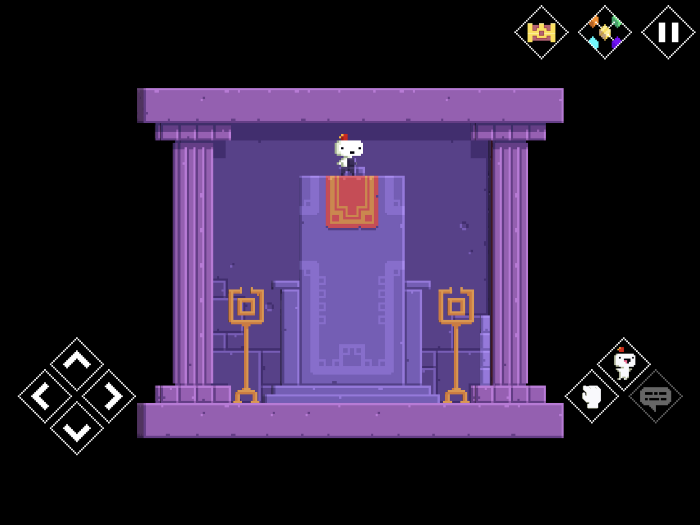When indie platformer Fez was released on Steam and Xbox 360 in April 2012, it rode on the wave of zeitgeist — developer Phil Fish had been featured in acclaimed documentary Indie Game: The Movie; the game itself featured an incredible soundtrack by chiptune composer Disasterpeace; it was fully immersed in the moment’s intense nostalgia for a refined version of the 1980s.
And when it was released, Fez stood as a testament of individual ingenuity. Its main conceit — that your character is the only being in a two-dimensional world that can perceive three dimensions — allowed for incredible level design and a control scheme that felt just as at home in a puzzle game as in a platformer.
Of course, there was also controversy, when Fez was released. And afterward, for quite a while. Fish was an acerbic character who liked to fight the Internet. In 2013, he quit game design — and canceled the just-announced Fez 2 — after arguing with a games journalist. Since then, Polytron has primarily been concerned with porting Fez to new platforms.
Which brings me to their most recent port, Fez on iOS, released in mid-December.
Fez on iOS is the same game, plot and progression-wise, as Fez on any other platform. You play as Gomez, a little two-dimensional kid who gets altered forever when he encounters the mystical Hexahedron and gains the power of three-dimensional perception. You lead Gomez and his Navi-like companion, Dot, through exquisitely-drawn levels to track down pieces of the Hexahedron before the world succumbs to black holes.
Mechanically, there are some issues.
I imagine it must be incredibly difficult for any developer to port a game like Fez, which had complicated controls on consoles to begin with, to mobile. They plotted a digital direction-pad onto the bottom-left of the screen, and on the bottom-right, a collection of actions Gomez can take, like talk to Dot or NPCs in the environment, pick up and open items, and jump. You can swipe left and right to change Gomez’s perception as well.
Ideally, this should work just fine on iOS devices, whose multi-touch displays are designed to work with multiple fingers doing different things on their surfaces just fine. And, for the most part, it does work perfectly well on the iPhone. On the iPad, however, I started to hit some snags.
During my playthrough of the game on iPad, I encountered many instances where, if I was moving left or right, the jump button was just unresponsive. Sometimes this was due to my not hitting the button exactly where it wanted me to (which is its own problem), but often, even if I hit my target I could expect a large percentage of jump attempts to turn into “let’s all watch helplessly as Gomez walks off a cliff, lemming-style, to his adorable pixelated death.” It didn’t render my game unplayable, but it was frustrating.
Another unfortunate instance, this time in my iPhone playthrough, involved a specific section of a world crashing my game whenever I would climb up and disembark from a ladder. I eventually had to restart my save, and I’m not sure if the issue persists as I haven’t reached this particular area again yet. Additionally, if I play for too long I encounter issues where the background soundtrack stutters — possibly a symptom of an overworked processor, maybe, or potentially an issue that needs to be fixed.
My takeaway is that Fez is by no means a perfect game on iOS, but it is still damn good. I find myself favoring the iPhone version just due to the issues I had on iPad, but you don’t have to choose between them; Fez is universally compatible across the iOS ecosystem. It is $4.99, which is much less than Polytron charges for its console and PC ports, but might be too much in a mobile context where there are clear issues and messiness at the margins. However, it’s worth looking into.
